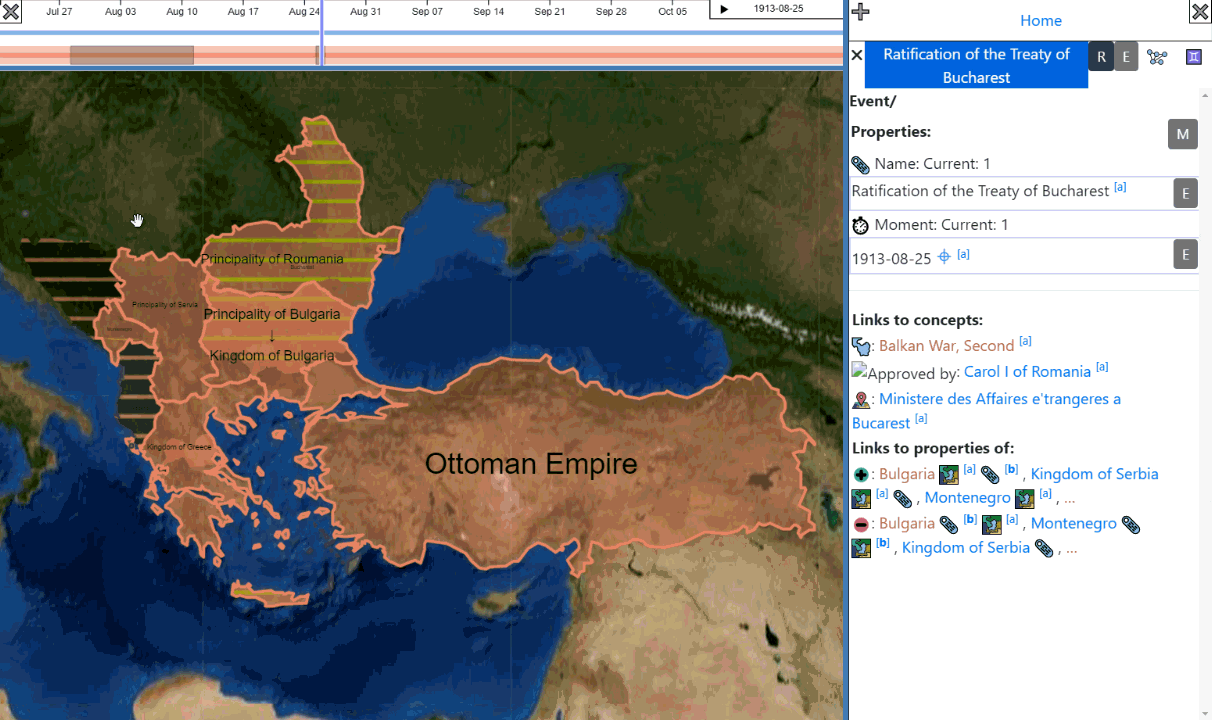 People, Events, Places
People, Events, Places
History is not linear. History is complex, connected, and ambiguous. Instead of writing a story with a progression, the complexity of history is best recorded as a set of interconnected people, places, and events. Countries, goods for trade, wars, queens and kings, everything is recorded as distinct historical objects with properties attested by sources. Connections between these objects (also attested by sources) capture meaning and allow for understanding of the unfolding of events without ascribing a single narrative thread.
In the platform:
- Anything can be recorded as an object: People, places, events, countries, goods for trade, wars, etc.
- Objects have properties: names, dates, locations, borders, quantities
- Quantitative properties can have an inaccuracy. For example, a date may be only given as a year, or a year and month; a casualty count may be given in hundreds of people.
- Each property can have multiple values. This multiplicity is two-fold:
- There can be a disagreement between what sources say the value should be. For instance the date of an event.
- Each property can change through time. For instance a country may be renamed in the course of history.
Next
